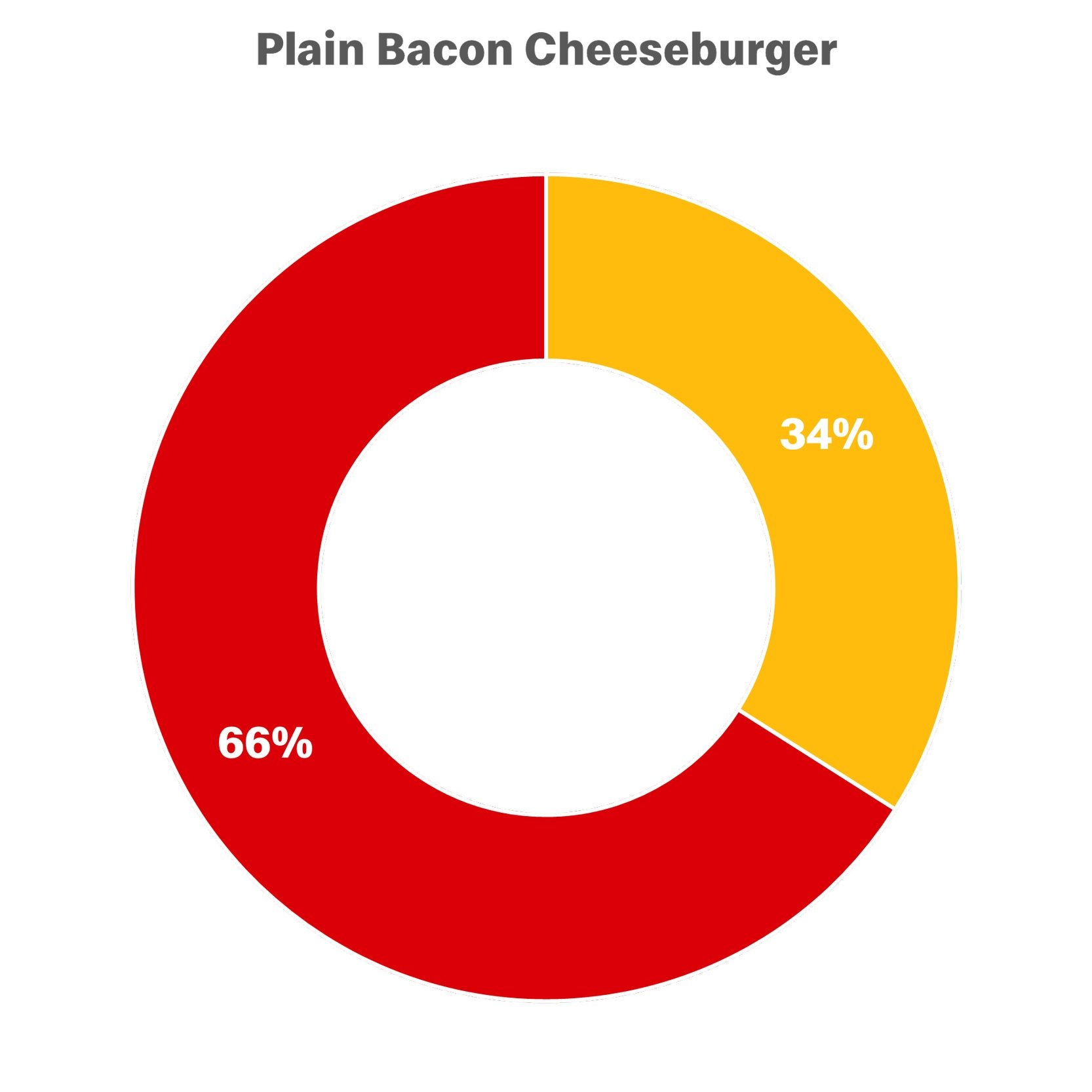
What does “Plain” Mean?
Many McDonald’s customers like to order their burgers plain, but what does “plain” really mean? I gathered data from customers across 5 markets (US, Canada, Australia, Germany and UK) to better understand what they expect when ordering a plain burger. This research helped us create more clarity in our ordering interfaces and align on one global definition of plain.
Problem Space
We Observed ....Our digital channels share no explanation of what the selection of “plain” means, causing customer confusion and order accuracy issues.
Global Mobile App
Kiosk
How might we give customers the confidence to order any Menu item plain and deliver exactly what they expect?
Research GoalsBecause a clear definition of “plain” is not provided in the mobile app experience, we conducted research in order to:
Understand what customers assume “plain” means for different Menu items.
Identify market differences between the interpretations.
Evaluate how McDonald’s can better communicate what “plain” means to our customers.
Methodology
For this research, data was collected through Voxpopme, an online research platform. Since we are spanning 5 markets, an online study will give the participants the autonomy to complete it at their own pace. Participants were asked to send in video responses to a few questions about what they think a plain hamburger, cheeseburger and bacon cheeseburger has on it.
Scope93 Participants
3 Menu items to test
Hamburger
Cheeseburger
Bacon cheeseburger
Data collected via Voxpopme, an online research platform
4
Everyone has a different definition of what's on a burger – regardless of if it's plain or not.Customers had a great amount of variation between what is on their ideal burgers, most didn’t fully align with the standard builds of McDonald’s.
Customers included ingredients from burger sauce and relish to radish in their ideal burgers.
Common can-adds were lettuce, tomatoes and mayo.
When asked what does “plain” mean, customers answered with similar terminology – it’s a “basic” “simple” burger.Plain Hamburger
Participants5 Markets - US, UK, Canada, Australia, Germany
Varying frequency of visiting McDonald’s
A representative mix of demographic sectors such as age, gender, ethnicity, educational level, household income, disability, etc.
Research Findings
1
2
3
5
6
Within GMA, McDonald’s defines “plain” to be a burger with just the buns, beef patty, cheese if applicable and any additions included in the Menu item name. 54.1% of participants across all markets where in line with McDonald’s “plain” burger builds.
Plain Cheeseburger
Plain Bacon Cheeseburger
Compared to other markets, UK customers were most unified in defining “plain” as McDonald’s does.Majority of UK participants do not expect any sauces or "salad" on the burger –just buns, meat and cheese (if it’s a cheeseburger). McDonald’s is directly aligned with what UK customers assume from plain burgers.
How many UK customers have the same definition of "plain" as McDonald's? N=20
Australia’s interpretations of “plain” diverges from other markets.Other markets had the greatest number of participants define “plain” alike to McDonald’s, however, Australia has a comparatively uniform distribution for the most frequent interpretations.
Australian customers mostly explained “plain” to have inclusions of pickles, condiments, lettuce and other additions.
How many Australian customers have the same definition of "plain" as McDonald's? N=27
Australia alone had customers understand “plain” to be not in a meal.Few thought “plain” did not reference the Menu item, rather the order as a whole. There were mixed opinions on whether the burger itself is plain or not along with it not being in a meal.
“If I just want a plain bacon cheeseburger, it means I don’t want anything extra on the burger and I don’t want it in a meal.”
“When I say I’m ordering a plain hamburger, it means that I don’t want it in a meal. I don’t’ want any drinks with it. I don’t want chips; I don’t want a side. I just want the hamburger on its own.”
“A [plain] cheeseburger to me means just a burger by itself, no chips, no drink. Just a bun, with a patty, a piece of cheese, ketchup, and a gherkin.”
Australia, UK and Germany commonly included condiments in their definition of “plain” burgers.Customers said “maybe” quite frequently when mentioning condiments, implying that it’s not a required element of a “plain” burger but preferred.
“That means it’s just the bun, the burger and the cheese, and maybe some ketchup.”
“If I asked for a plain bacon cheeseburger, I would expect a patty, bacon, cheese and bun, that’s it. I wouldn’t expect anything else. Tomato sauce maybe, because that’s standard and comes with that.”
“I would imagine that ordering a plain cheeseburger means ordering a beef burger with a slice of cheese on top. .. Maybe some condiment, like some sauce, but just a plain beef burger with cheese.”
What’s Next?
While this research provided us valuable information to understand what “plain” means to customers, in order to define a global definition, the work that needs to be done next includes:
Refine the study by providing participants more background of where “Make it Plain” appears in the ordering flow and reevaluate the Germany market, as translation discrepancies limited findings.
Leverage market findings to redefine what “Plain” means to McDonald’s and provide consistent representation of that on our ordering channels.
Understand the impacts to restaurant staff when assembling and interpreting “plain” orders by conducting crew interviews.

Next Project →













